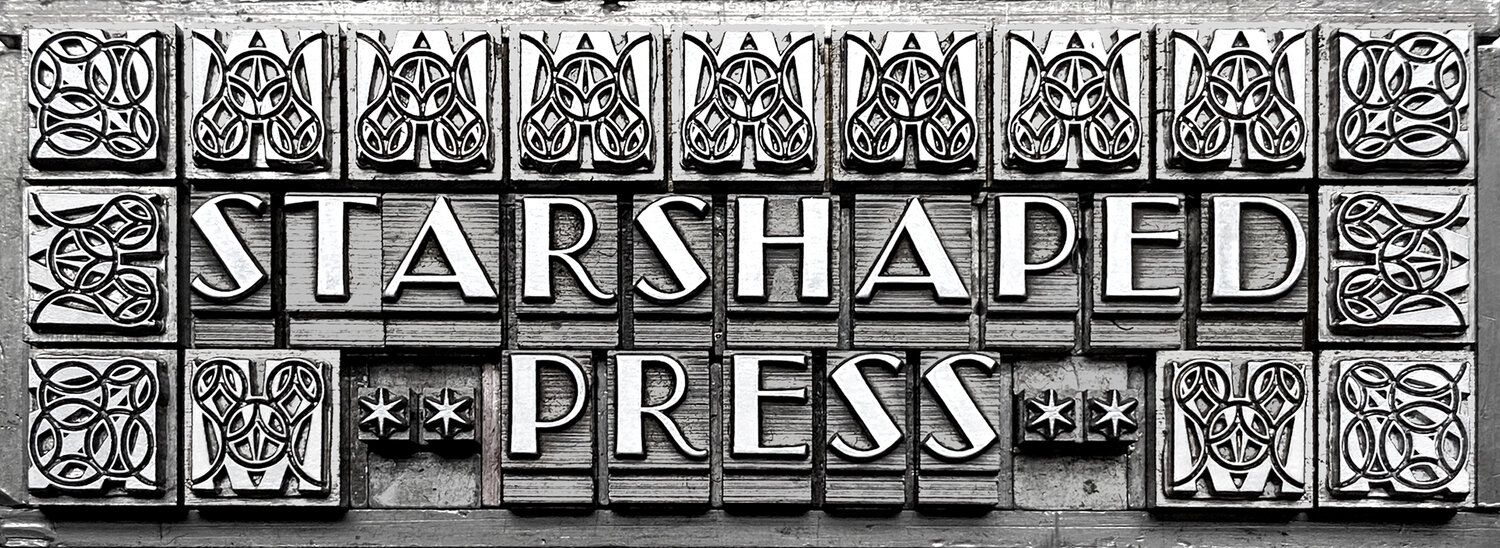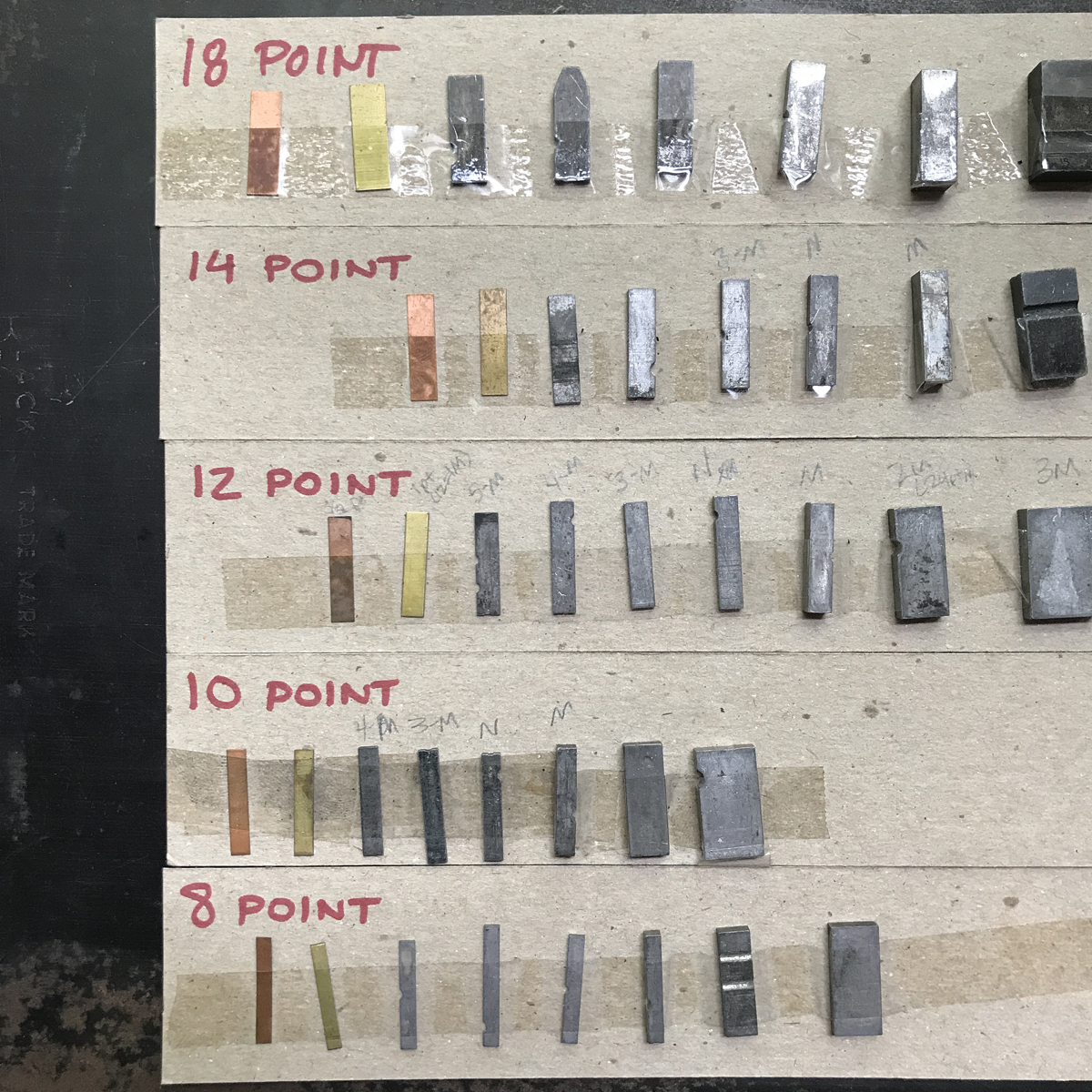Once upon a time, in the magical era of purchasing brand new type direct from a current specimen book, you could acquire popular metal faces for various languages that included 'special' characters unique to that language. If you didn't want to invest in a full typeface then you could purchase accents to add to your current faces. I have not seen too many typefaces in the wild that include the special character set (my only font that does is Typewriter, and I'll spare sharing that monospaced dog) but I've seen my share of accent handy boxes.
I've stumbled across various handy boxes containing different styles and sizes of accents.
While it's rare to add these to text in my studio, the need has arisen over the years. It's not difficult to do, though lowercase adds a challenge. I'll show a few options for uppercase here.
In the first example, I set the line first then scooted it down slightly to have about 2-3 points of space above the line. Then I inserted the accent above the appropriate letter. It's not a bad idea to write the word with an accent first, so that you have a visual of how NOT to set it; remember to continue thinking in reverse when adding accents.
See the gap above the spacing and next to the accent? Now measure that based on where you want the accent to be and also take note of what size it is. In this case, the accent is 4 pt and the type is 12 pt for reference.
Because this accent is only 4 pts I fill in on either side with leads that are the correct length (or close to it; when you lock up this form the pressure from top to bottom will most likely hold the accent and type in place, even if there's a slight gap.) The less wiggle room the accent has the better, as it can shimmy away from being exactly where you want it to appear in print.
The other option is to work with standard size accents. In the bottom word, the cédille is 8 pt which is much easier; I only had to put 8 pt spacing on either side and set it solid to the word above (no leading between the two.)
Using piece accents with lowercase is a little more challenging because of the obvious space about the letterform. I have been known to let an 'e' 'take one for the team' and get trimmed/filed down to just the raised letter so that an accent can sit directly above it. Not recommended for small sizes.
Remember, too, that accent boxes can be a whole lot of fun as design elements! I've used them in various projects, so don't pass them up.

















































